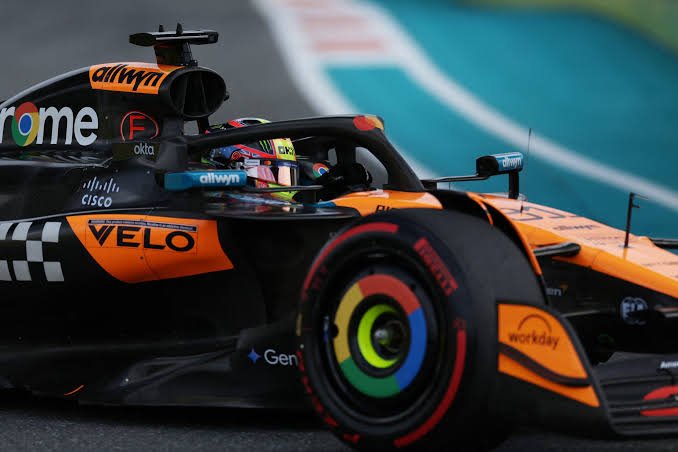Following an extensive post-race analysis of Oscar Piastri’s victorious McLaren at the Miami Grand Prix, the FIA has officially confirmed the vehicle’s full compliance with all technical regulations. Persistent murmurs of potential rule breaches—particularly involving suspicions over tyre degradation advantages and speculative misuse of water cooling—were definitively dispelled. Critics had pointed toward Article 11.5, alleging unconventional cooling methods, but no substantive evidence was uncovered.
The FIA’s technical delegate, Jo Bauer, confirmed that Piastri’s MCL39 was randomly selected for enhanced scrutiny among the top ten finishers. A meticulous inspection was conducted, with special focus on the wheel bodywork and adherence to Article 3.13 and Article 11.5. The investigation found no deviations from regulatory standards. All examined components satisfied the stringent specifications outlined in the 2025 Formula One Technical Regulations.
Ferrari’s Charles Leclerc also underwent similar evaluations, with attention paid to the car’s steering wheel assembly and clutch mechanisms. These elements were checked against the official team submissions and the applicable technical directives, particularly TR Articles 17.6 and 9.3.2. As with McLaren, Ferrari’s car was found to be entirely compliant with the FIA’s regulations, reaffirming procedural consistency.
Christian Horner, team principal of Red Bull Racing, weighed in from Miami with a tempered response to McLaren’s commanding performance. He acknowledged that dominant teams invariably attract heightened scrutiny. Horner refrained from casting aspersions, instead commending McLaren’s superiority, even as his own team failed to overturn George Russell’s podium under a yellow flag protest. He noted the cyclical nature of suspicion in the sport, referencing past instances where McLaren had challenged Red Bull’s design.
Ultimately, Horner conceded that McLaren currently possesses the benchmark car, and surmised that their competitive edge may persist across several forthcoming races. While speculative allegations remain an inherent part of the Formula One narrative, the FIA’s systematic inspections have, at least for now, placed the legality of McLaren’s Miami success beyond reproach.

This text is in English. Here’s a comment in English:
What a thorough analysis of the post-race scrutiny at the Miami Grand Prix! It’s fascinating how the FIA leaves no stone unturned when it comes to ensuring compliance with technical regulations. Oscar Piastri’s McLaren being cleared of any breaches is a testament to the team’s precision and adherence to the rules. However, it’s interesting how suspicions always seem to arise around dominant performances—does this reflect a culture of skepticism in Formula One? Christian Horner’s measured response was refreshing, but it makes me wonder: how much of this scrutiny is driven by genuine concern versus competitive rivalry? McLaren’s current dominance is undeniable, but do you think other teams will catch up soon, or is this the start of a new era for them? What’s your take on the balance between innovation and regulation in the sport?